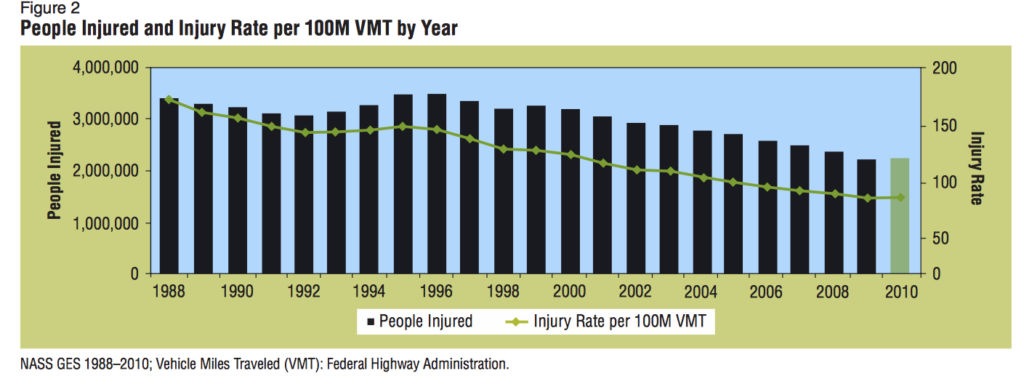
The rule is as old as government itself: You can’t sue the King.
The concept of “sovereign immunity” protects governments from suit unless they specifically consent. In the U.S. we are permitted to do so by various statutes, and in the case of the federal government, under the Federal Tort Claims Act.
Well, sometimes, anyway. Because there’s a big, fat hairy exception to that rule, and that exception is for those on active duty in the military. You can’t bring suit for acts “arising out of combatant activities.” The problem here is that it’s been extended to plain old negligence away from the battlefield.
Did your stateside barracks burn down? Sorry Charlie. Or in this case, sorry Rudolph Feres. We’re you raped by your drill sergeant? Tough noogies. Your wife died from blood loss after child birth because of a looooong delay in giving blood? You get our condolences and we wish you well raising the kid as a single parent.
The Feres Doctrine prevents all suits, because the U.S. Supreme Court extended the prohibition on suits from “combatant activities” to all situations. It has long been an unfair abomination of the law.
And so, as I took the train home yesterday and read in the NY Times that a portion of the Feres Doctrine was to be repealed for medical malpractice under the pending National Defense Authorization Act, I was elated for those that had been victimized twice.
But. And you knew there had to be a “but,” didn’t you? According to the Military Times, most claims are limited to $100,000. And the military doesn’t pay the legal fees. And it doesn’t happen under the Federal Tort Claims act, but under some kind of (not yet written) administrative procedure. You can find the text here.
If the claims are limited to $100,000 this medical malpractice exception is virtually useless. Because in order to prove the claim experts will be required. The military wouldn’t be responsible for the original illness, after all. Only for that which was caused by medical malpractice. And you need experts for that.
And experts cost money. As do depositions and medical records. And with military personnel involved, probably lots of travel too.
The military, of course has unlimited resources to defend and hire experts. And all medical malpractice cases are vigorously defended.
Even a simple medical malpractice case can cost a plaintiff $25,000 – $50,000 when you figure in experts for liability, causation and damages. And that doesn’t include a trial.
And more — the legal fee is capped at 20%.
The soldier or sailor is unlikely to have that money. It will be lent by the attorneys. But which attorneys are going to pony up so much money with so much risk for so little fee? It’s a path to bankruptcy.
A $100,000 limit is a shonda. A shame. An embarrassment. It’s like putting a band aid on an amputated limb. Few people will ever find a lawyer to handle such a small case at such great risk and cost.
The text of the bill says that the Secretary of Defense can create regulations that allow them to pay more. Regulations that haven’t been written.
So what is the purpose of setting that $100,000 bar? Will future Secretaries of Defense be paying those damages out of their own budgets? Who shall they take the money from?
Why is Congress allowing the Secretary of Defense to set its own rules? Why isn’t this done under the existing rules of the Federal Tort Claims act? Why wouldn’t the Judiciary handle such a claim?
Congress should treat our soldiers and sailors better. If they are mistreated by the military doctors they are compelled to use they should have access to justice. Real justice. Not this pretend crap.
It’s often said that perfect is the enemy of the good, but I can’t see how this will end out as good if this bill is so watered down that the Secretary of Defense can so easily circumvent Congress.
See also:
- Navy Times: Tragedy and Injustice: The heartbreaking truth about military medical malpractice (6/10/16)
- The PopTort: Rampant Medical Malpractice in Military Hospitals – The Real Impact of Immunity (5/19/09)
- Jonathan Turley: What Soldiers Really Need Are Lawyers (8/7/07)
Addendum: The following press release came from Rep. Jackie Speier, who spearheaded the campaign to fix the Feres Doctrine. She asserts that there will be congressional oversight of the rule making and that the potential recovery is “unlimited.” The devil, it is often said, is in the details:
December 10, 2019 Press Release
Washington, D.C.- Last night, the House and Senate Armed Services Committees released a conference report for the fiscal year 2020 National Defense Authorization Act (NDAA) that included an administrative claims process that will compensate servicemembers harmed by medical malpractice in military facilities. As Chair of the House Armed Services Military Personnel Subcommittee, Congresswoman Jackie Speier (D-CA) has led the campaign to achieve justice for victims of military medical malpractice over the last year.
“Today will be remembered as a landmark day in the fight for justice for servicemembers and their families,” Rep. Speier said. “After nearly 70 years of the FeresDoctrine, servicemembers and their families finally have a path forward in seeking compensation for medical malpractice committed by military health care providers, and the Defense Department will have to take their claims seriously. This victory belongs to the hundreds if not thousands of injured servicemembers and their loved ones who have spoken out about this injustice and forced Congress to listen. In particular, today belongs to Army Green Beret and SFC Richard Stayskal, who, after receiving a terminal cancer diagnosis that stemmed from military medical malpractice, forged a bipartisan coalition to achieve this legislative breakthrough through his countless visits to DC and heroic advocacy.”
Though this provision will not create an exemption to the Feres doctrine nor will it allow servicemembers to sue the Department of Defense (DOD) for medical malpractice in federal court, it will allow servicemembers to receive uncapped monetary compensation under the Military Claims Act for malpractice. It also forces the DOD to document and respond to these cases. The legislation also contains provisions to enable congressional oversight of DOD’s rulemaking and administration of the claims process so that it can be improved in future years.
“Though today’s conference report was an accomplishment in many respects, this fix is far from perfect,” Rep. Speier added. “Servicemembers – like their families, federal civilian employees, and even prisoners – who suffer from malpractice deserve their day in federal court. And I have serious concerns about allowing the DOD to run the entire claims process as they will write the rules, investigate malpractice incidents, and adjudicate claims. But it was important that we seize this unique political moment, created by the hard work of Richard Stayskal and other victims and their loves ones, as well as the availability of funds to pay for claims under Congressional budget rules. Rest assured that I will closely oversee the implementation of these changes and continue to work to address the myriad injustices that remain due to the Feres doctrine.”
Rep. Speier chaired a Military Personnel Subcommittee hearing on the impact of the Feres doctrine and prospects for reform after meeting with SFC Stayskal in late 2018. Subsequently, she introduced H.R. 2422, the SFC Richard Stayskal Military Medical Accountability Act of 2019, which passed as part of the House’s NDAA bill.





